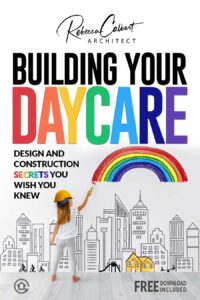Have you ever thought about what would happen if a disaster struck and you were suddenly responsible for the well-being of not just yourself, but also your children? It’s not a cheerful scenario to imagine, but preparing for such situations is crucial. Ensuring that children are cared for during a crisis is vital, not only for their safety and well-being but also for providing peace of mind to you and the other adults around them.
Understanding the Scope of Disasters
Disasters come in many forms and sizes, from natural calamities like earthquakes, hurricanes, and wildfires to human-made events such as industrial accidents and terrorist attacks. Each type has its own set of challenges and requirements when it comes to child care. The unpredictability of these events makes them difficult, but not impossible, to prepare for.
Types of Disasters
To better prepare, you need to understand the kinds of disasters that could realistically happen in your area or while you’re traveling. Here’s a quick overview:
| Type of Disaster | Examples | Common Challenges for Child Care |
|---|---|---|
| Natural Disasters | Earthquakes, Floods, Tornadoes | Displacement, loss of resources, separation from adults |
| Human-Made Events | Chemical spills, Terrorist attacks | Panic, communication breakdowns, unsafe environments |
| Health-Related | Pandemics, Disease outbreaks | Quarantine situations, medical care shortage |
Each of these events presents unique challenges in terms of ensuring children are safe, calm, and have their basic needs met.
The Critical Importance of Child Care During Crises
Children are among the most vulnerable during any kind of disaster. They rely on adults for food, shelter, emotional support, and protection. When chaos erupts, these responsibilities become crucial.
Why Children Are Especially Vulnerable
Children’s physical, emotional, and developmental needs make them more susceptible during disasters. Here’s why:
-
Physical Needs: Children have different dietary requirements and need more frequent meals. They are also more susceptible to dehydration and injury.
-
Emotional Needs: Kids look up to adults for cues on how to react in stressful situations. Their perception of danger and ability to cope are directly influenced by their caregivers.
-
Developmental Needs: Disasters can disrupt educational and social environments, causing long-term developmental impacts.
Understanding these vulnerabilities can help in crafting effective child care strategies during emergencies.
Preparing Your Family for Potential Disasters
While you can’t predict exactly when or how a disaster will strike, you can take steps to prepare your family for when it does. A robust plan not only protects your children but also reduces overall stress levels.
Creating a Family Disaster Plan
Creating a family disaster plan involves several components to ensure everyone knows what to do. Here’s a simple yet effective plan:
-
Communication Strategy: Decide how you will communicate during and after a disaster. Consider both in-family communications and reaching out to external contacts.
-
Evacuation Plan: Know your exit routes and have a meeting spot to regroup if separated. Familiarize your children with these plans regularly.
-
Emergency Kit: Prepare a kit that includes necessities such as water, food, first aid supplies, medications, and essential documents.
-
Practice Drills: Regular drills ensure that everyone is familiar with the plan and can act calmly and swiftly during an actual disaster.
Involving Children in the Planning Process
Empowering your children to be part of the preparation process can help them feel more in control and less anxious. Discuss plans openly and use age-appropriate activities to educate them about what to do in various situations.
Building a Support Network
Having a strong support network is crucial for effective disaster management, particularly when it comes to child care.
Identifying Key People
Identify friends, family, or neighbors who can be part of your support network. Make sure these individuals are familiar with your family’s needs and plans.
Community Resources
Research community resources such as schools, local government agencies, or faith-based organizations that can provide assistance during a disaster. It’s essential to know whom you can reach out to for help when needed.
Child-Focused Emergency Kits
Having a specialized emergency kit for your children is an essential aspect of disaster preparation. This kit should be tailored to meet their unique needs.
Essential Items in a Child’s Emergency Kit
Here’s a checklist of items specifically for children that should be included:
- Diapers and Wipes: Essential for infants and toddlers.
- Extra Clothing: Multiple changes of clothes suitable for various weather conditions.
- Favorite Toys/Books: Provides comfort and a sense of normalcy.
- Snacks and Formula: Age-appropriate food such as formulas, snacks, or baby food.
- Medications: Any required medications with a copy of prescriptions.
- Identification: Include a recent photo and an identification card.
Rotating and Updating the Kits
Ensure you regularly check the kits for expired items or outgrown clothing. A regular review ensures the kit is always ready for use.
Psychological and Emotional Support
The psychological impact of a disaster on children can be significant. Long after the immediate threat has passed, they may struggle with fear, anxiety, or trauma.
Identifying Signs of Trauma
Children might not always communicate their distress verbally. Here’s what to watch for:
- Regressive Behavior: Returning to earlier behaviors like thumb-sucking or bed-wetting.
- Emotional Outbursts: Increased irritability or frustration.
- Changes in Play: Depicting violent or traumatic events in their games.
Providing Comfort and Reassurance
To help your child cope:
- Establish Routine: Keeping a routine provides a sense of normalcy.
- Open Communication: Encourage them to talk about their feelings.
- Seek Professional Help: If needed, get help from a child psychologist or counselor.
Role of Schools and Daycares
Educational institutions play an essential role in disaster preparedness and response. Schools and daycares often serve as shelters and distribution points during a disaster.
Preparing Schools for Disasters
Ensure your child’s school or daycare has a clear and effective disaster plan. This should include:
- Comprehensive Evacuation Procedures: Routes, policies, and parent communication plans.
- Emergency Supplies: Schools should be equipped with food, water, and medical supplies.
- Drill Frequency: Regular drills to make sure everyone knows what to do.
Communication with Schools
Keep in constant communication with your child’s school to understand their protocols and express any concerns you might have. Knowing what to expect will alleviate anxiety when every second counts.
Government and Policy Support
Government policies are crucial in creating an infrastructure that supports child care during disasters.
Understanding Local and Federal Policies
Familiarize yourself with local and national policies regarding emergency management and child care support. Important aspects include:
- Relief Programs: Understand what relief programs are available for families.
- Community Resources: Know which institutions are available to provide assistance.
Advocacy for Improved Policies
Being active in your community and advocating for policies that protect children during disasters can bring about necessary changes. Your voice can help build a robust framework for future preparedness.
Conclusion
In summary, while disasters are unpredictable, your response doesn’t have to be. Through understanding, preparation, and practice, you can significantly minimize the impact of any dangerous event on the well-being of your children. Remember, your preparation not only safeguards the immediate safety of your children but also nurtures their psychological resilience. The time and effort you put into planning today can help secure a safer tomorrow for your family.

